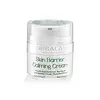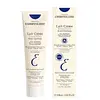What's inside
What's inside
 Key Ingredients
Key Ingredients

 Benefits
Benefits

 Concerns
Concerns

 Ingredients Side-by-side
Ingredients Side-by-side

Water
Skin ConditioningButylene Glycol
HumectantPEG-240/Hdi Copolymer Bis-Decyltetradeceth-20 Ether
StabilisingPolysorbate 80
EmulsifyingCalendula Officinalis Flower
Skin ConditioningPropanediol
SolventGlycerin
HumectantPsidium Guajava Fruit Extract
AstringentCamellia Sinensis Leaf Extract
AntimicrobialRose Extract
Skin ConditioningNelumbo Nucifera Leaf Extract
Skin ConditioningPhysalis Angulata Extract
Skin ProtectingCaprylic/Capric Triglyceride
MaskingSnail Secretion Filtrate
Skin ConditioningLecithin
EmollientBee Venom
AstringentAcetyl Glutamine
Skin ConditioningSh-Oligopeptide-1
Skin ConditioningSh-Oligopeptide-2
Skin ConditioningSh-Polypeptide-1
Skin ConditioningSh-Polypeptide-9
Skin ConditioningSh-Polypeptide-11
Bacillus/Folic Acid Ferment Filtrate Extract
AntioxidantSodium Hyaluronate
HumectantCaprylyl Glycol
EmollientHydrolyzed Silk
HumectantPaeonia Lactiflora Root Extract
Skin ConditioningTrehalose
HumectantPolysorbate 20
EmulsifyingParfum
MaskingEthylhexylglycerin
Skin ConditioningPhenoxyethanol
PreservativeGluconolactone
Skin ConditioningSodium Benzoate
MaskingEthoxydiglycol
HumectantCitric Acid
BufferingPropylene Glycol
HumectantDiazolidinyl Urea
PreservativeIodopropynyl Butylcarbamate
PreservativePotassium Sorbate
PreservativeSodium Phytate
Water, Butylene Glycol, PEG-240/Hdi Copolymer Bis-Decyltetradeceth-20 Ether, Polysorbate 80, Calendula Officinalis Flower, Propanediol, Glycerin, Psidium Guajava Fruit Extract, Camellia Sinensis Leaf Extract, Rose Extract, Nelumbo Nucifera Leaf Extract, Physalis Angulata Extract, Caprylic/Capric Triglyceride, Snail Secretion Filtrate, Lecithin, Bee Venom, Acetyl Glutamine, Sh-Oligopeptide-1, Sh-Oligopeptide-2, Sh-Polypeptide-1, Sh-Polypeptide-9, Sh-Polypeptide-11, Bacillus/Folic Acid Ferment Filtrate Extract, Sodium Hyaluronate, Caprylyl Glycol, Hydrolyzed Silk, Paeonia Lactiflora Root Extract, Trehalose, Polysorbate 20, Parfum, Ethylhexylglycerin, Phenoxyethanol, Gluconolactone, Sodium Benzoate, Ethoxydiglycol, Citric Acid, Propylene Glycol, Diazolidinyl Urea, Iodopropynyl Butylcarbamate, Potassium Sorbate, Sodium Phytate
Water
Skin ConditioningCaprylic/Capric Triglyceride
MaskingGlycerin
HumectantOctyldodecanol
EmollientPolyglyceryl-3 Methylglucose Distearate
EmulsifyingButyrospermum Parkii Butter
Skin ConditioningCera Alba
EmollientJojoba Esters
EmollientHelianthus Annuus Seed Wax
Skin ConditioningGlyceryl Stearate
EmollientXanthan Gum
Emulsifying1,2-Hexanediol
Skin ConditioningCaprylyl Glycol
EmollientSodium Hydroxide
BufferingAcrylates/C10-30 Alkyl Acrylate Crosspolymer
Emulsion StabilisingPolyglycerin-3
HumectantAcacia Decurrens Flower Wax
EmollientAloe Barbadensis Leaf Juice Powder
Skin ConditioningTocopherol
AntioxidantTropolone
Skin ConditioningGlycine Soja Oil
EmollientHydrolyzed Soy Protein
HumectantWater, Caprylic/Capric Triglyceride, Glycerin, Octyldodecanol, Polyglyceryl-3 Methylglucose Distearate, Butyrospermum Parkii Butter, Cera Alba, Jojoba Esters, Helianthus Annuus Seed Wax, Glyceryl Stearate, Xanthan Gum, 1,2-Hexanediol, Caprylyl Glycol, Sodium Hydroxide, Acrylates/C10-30 Alkyl Acrylate Crosspolymer, Polyglycerin-3, Acacia Decurrens Flower Wax, Aloe Barbadensis Leaf Juice Powder, Tocopherol, Tropolone, Glycine Soja Oil, Hydrolyzed Soy Protein
 Reviews
Reviews

Ingredients Explained
These ingredients are found in both products.
Ingredients higher up in an ingredient list are typically present in a larger amount.
This ingredient is an emollient, solvent, and texture enhancer. It is considered a skin-softener by helping the skin prevent moisture loss.
It helps thicken a product's formula and makes it easier to spread by dissolving clumping compounds.
Caprylic Triglyceride is made by combining glycerin with coconut oil, forming a clear liquid.
While there is an assumption Caprylic Triglyceride can clog pores due to it being derived from coconut oil, there is no research supporting this.
Learn more about Caprylic/Capric TriglycerideCaprylyl Glycol is a humectant and emollient, meaning it attracts and preserves moisture.
It is a common ingredient in many products, especially those designed to hydrate skin. The primary benefits are retaining moisture, skin softening, and promoting a healthy skin barrier.
Though Caprylyl Glycol is an alcohol derived from fatty acids, it is not the kind that can dry out skin.
This ingredient is also used as a preservative to extend the life of products. It has slight antimicrobial properties.
Learn more about Caprylyl GlycolGlycerin is already naturally found in your skin. It helps moisturize and protect your skin.
A study from 2016 found glycerin to be more effective as a humectant than AHAs and hyaluronic acid.
As a humectant, it helps the skin stay hydrated by pulling moisture to your skin. The low molecular weight of glycerin allows it to pull moisture into the deeper layers of your skin.
Hydrated skin improves your skin barrier; Your skin barrier helps protect against irritants and bacteria.
Glycerin has also been found to have antimicrobial and antiviral properties. Due to these properties, glycerin is often used in wound and burn treatments.
In cosmetics, glycerin is usually derived from plants such as soybean or palm. However, it can also be sourced from animals, such as tallow or animal fat.
This ingredient is organic, colorless, odorless, and non-toxic.
Glycerin is the name for this ingredient in American English. British English uses Glycerol/Glycerine.
Learn more about GlycerinWater. It's the most common cosmetic ingredient of all. You'll usually see it at the top of ingredient lists, meaning that it makes up the largest part of the product.
So why is it so popular? Water most often acts as a solvent - this means that it helps dissolve other ingredients into the formulation.
You'll also recognize water as that liquid we all need to stay alive. If you see this, drink a glass of water. Stay hydrated!
Learn more about Water